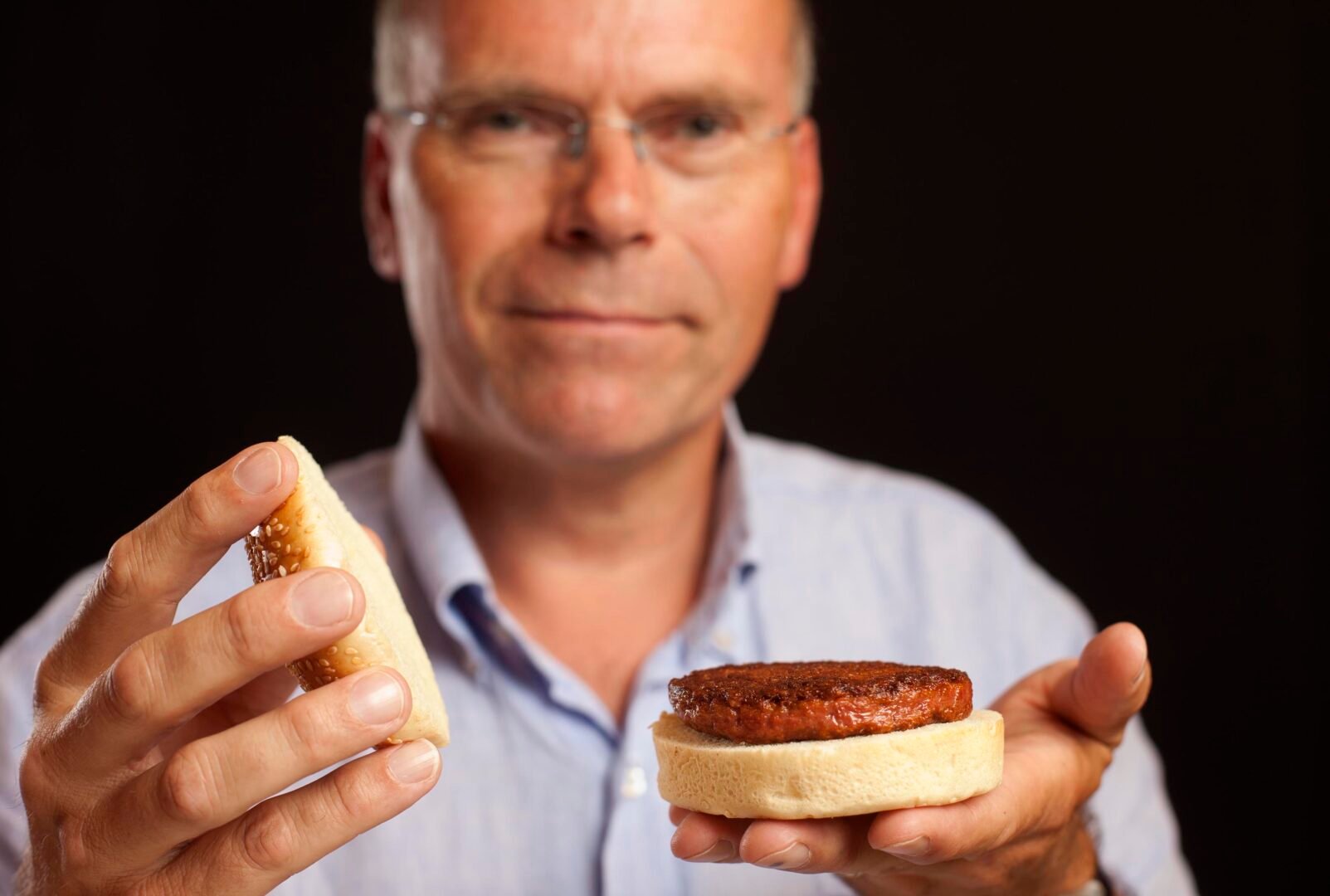Cultivated meat was once a vision. Now it’s becoming a reality

This week marks an important time in cultivated meat history: It is the 98th anniversary of when Dutch researcher Willem van Eelen—widely regarded as the “godfather of cultivated meat”—was born. Van Eelen’s inputs to the field catalyzed the Dutch government to fund the first cultivated meat consortium and motivated researchers like Peter Vestrate and professor Mark Post, the creators of the world’s first cultivated meat proof of concept, to enter the field. In honor of van Eelen’s birthday, we’re shining a light on a handful of cultivated meat pioneers and their contributions to making the field what it is today, from early conceptualizations in books and media to the realizations of these visions by forward-thinking companies and researchers.
One of the earliest concepts of cultivated meat production can be traced to a 1930 book entitled “The World in 2030” by British politician Frederick Edwin Smith.
“…the highly prized varieties of animal foods—such, for example, as beefsteak or chicken’s breast—will be grown in suitable media in the laboratory. It will no longer be necessary to go to the extravagant length of rearing a bullock in order to eat its steak.”
Frederick Edwin Smith
A similar hypothesis was echoed in Winston Churchill’s 1931 essay. These manuscripts were published during a time when an avian cardiac muscle tissue culture, originally established by French scientist Alexis Carrel, had been kept alive and proliferating for 20 years. In the 1950s, the science fiction novel “The Space Merchants” described the world’s meat production arising from what the authors called “Chicken Little”—a large piece of meat several feet in diameter.
Government-funded research sparks innovation
Following a few other mentions of early cultivated meat concepts in books and films, Willem van Eelen filed a general patent in 1997 about the production of meat using cell culture techniques. Through a government-sponsored in vitro meat consortium in The Netherlands, van Eelen was able to recruit a team to characterize the feasibility of cultivated meat production; a team which included Peter Verstate and professor Mark Post. During the same period, a project funded by NASA demonstrated an early proof of concept for cultivated seafood in the form of a small piece of goldfish muscle tissue that was able to be expanded in culture.
While public funding for the Dutch consortium was terminated in 2009, Peter Verstate and professor Post were able to secure financial support from Google’s co-founder Sergey Brin, which resulted in the demonstration of the first-ever cultivated burger, presented in 2013. This burger was produced by taking a small muscle biopsy from a living cow, extracting and isolating satellite cells, and feeding and nurturing these cells so they multiply to create muscle fibers. After three weeks, 10,000 individual muscle fibers were harvested and combined to make one 85 gram “burger” patty. Professor Post has described the general production process in a 2014 review article, which outlines four main steps: 1) harvesting stem cells from an animal, 2) cell proliferation, 3) differentiation and maturation of stem cells into muscle fibers, and 4) assembly of fibers into a final “meat” tissue product. Peter Verstate and Professor Post have then co-founded the cultivated meat company Mosa Meat, and have since published a patent about its cell differentiation process into muscle fibers, suggesting possible avenues for improving the process.
These possible improvements include:
- Expanding cells on small spherical surfaces (i.e., microcarriers) within large fermentation vessels for improved efficiency,
- Replacing animal materials such as bovine collagen with animal-free compounds that have a similar functionality,
- Automating the entire process to improve efficiency, and
- Applying electrical stimulation to speed up maturation of the muscle tissue.
According to Mosa Meat’s website, they are now using a completely animal-free culture medium, having managed to replace the fetal bovine serum that was necessary for the production of the burger in 2013.

[Photo credit: Mosa Meat]
Private sector expands the field beyond proof of concept
Upside Foods, formerly known as UPSIDE Foods, was established in 2015 and has been assigned several patents regarding possible approaches for large-scale cultivated meat production, including one patent from 2018 that described a novel approach to improving cell proliferation—a critical step for achieving commercial-scale production.
In December of 2020 Eat Just, Inc. became the first company to obtain regulatory approval to produce and sell their cultivated chicken nuggets in Singapore. In addition to avian meats, the company is also exploring Wagyu beef derived from cells from specialized Wagyu breeds in Japan. Eat Just, Inc. was reassigned one of the earliest cultivated meat patents that expires in 2022 and describes the production of cultivated meat using scaffolds composed of a diverse set of materials from natural or synthetic sources.
Aleph Farms is a start-up from Israel which originated as a spin-out from GFI senior scientist Tom Ben-Arye’s Ph.D. research.Tom’s research, conducted in professor Shulamit Levenberg’s lab at The Technion –Israel Institute of Technology, showed that co-cultured cells grown on edible porous scaffolds could be differentiated into muscle fibers.

[Photo credit: Eat Just, Inc.]
Some industry pioneers have been pursuing research into cultivated seafood products. This includes Shiok Meats, a Singapore-based company developing cultivated seafood products from crustaceans. The company has revealed prototypes of cultivated shrimp and lobster and has a patent concerning crustacean muscle and fat cell-line development under different strategies. In addition, California-based company BlueNalu is exploring cultivated fish from different species and has previously demonstrated proofs-of-concept in the media.
Realizing a better food future
Cultivated meat production has come a long way from a sci-fi hypothesis to a blooming innovative sector consisting of multiple strategies to replace current animal agricultural practices. With a number of cultivated meat and seafood companies set to open pilot production facilities in the near term, including FutureMeat Technologies and Wildtype, it’s clear that Willem van Eelen’s vision is rapidly becoming a reality. Private sector innovation and public sector funds can accelerate this technology and help us realize a better food future.
Header image credit: David Parry/PA
